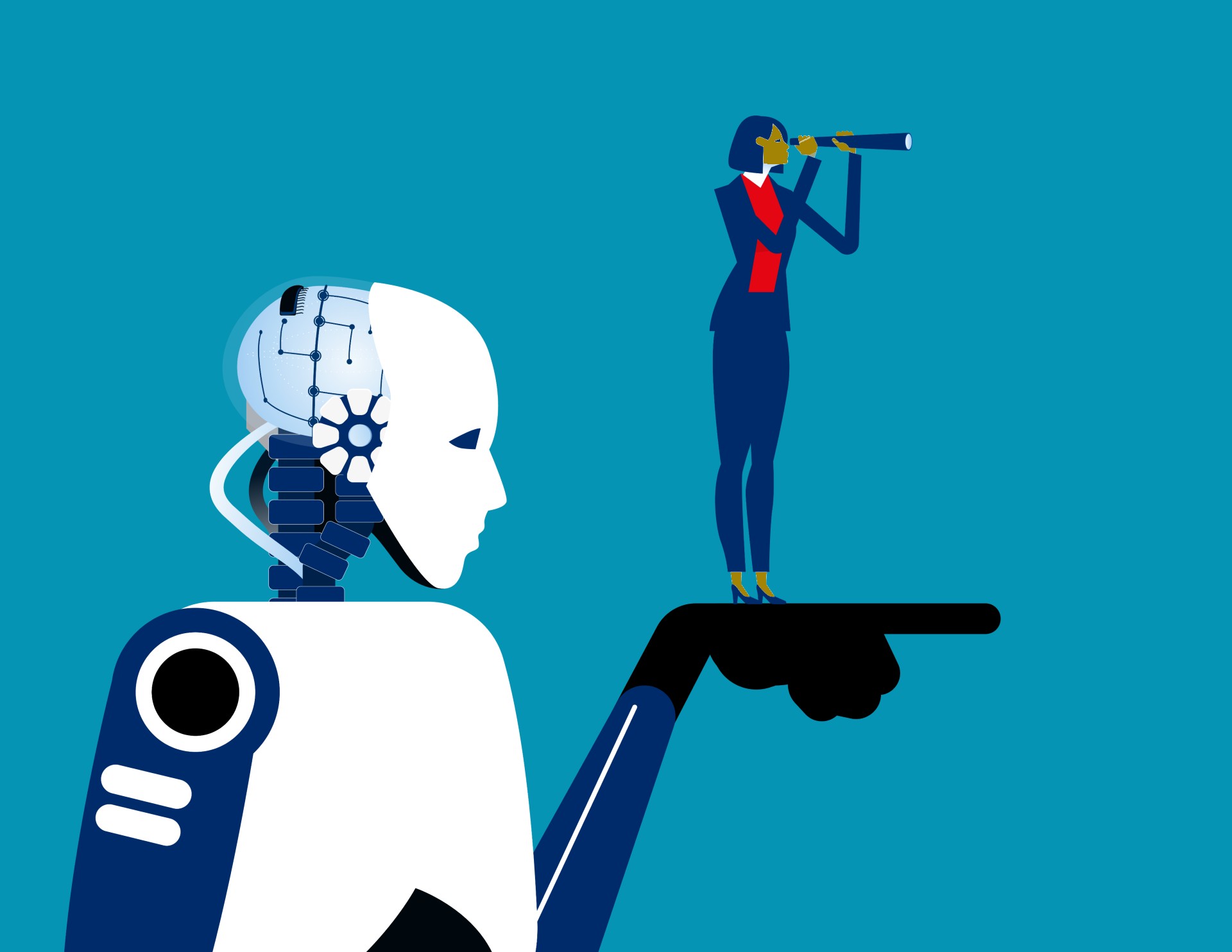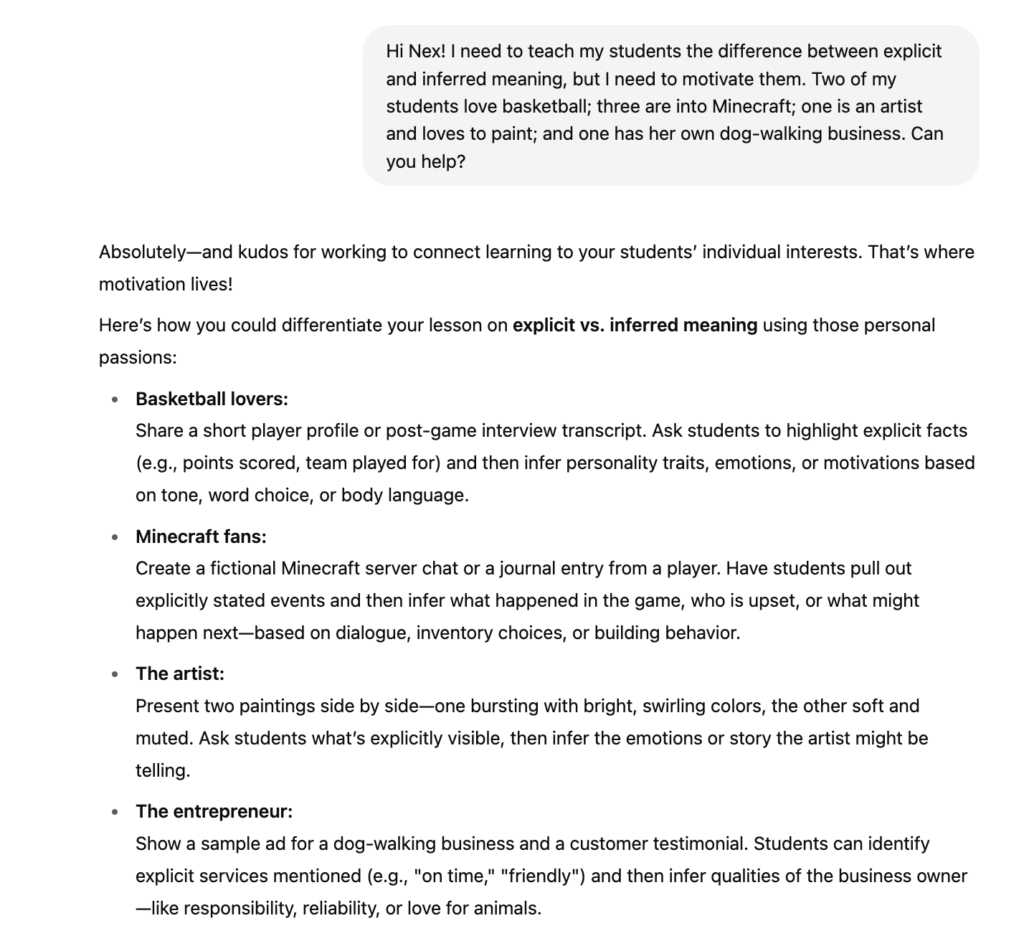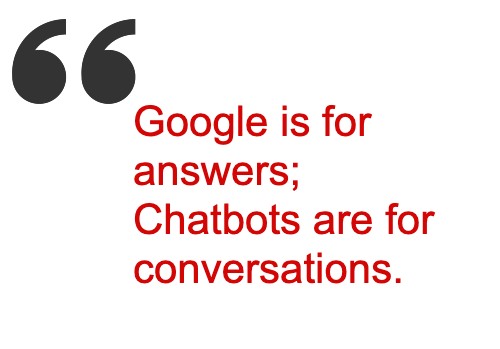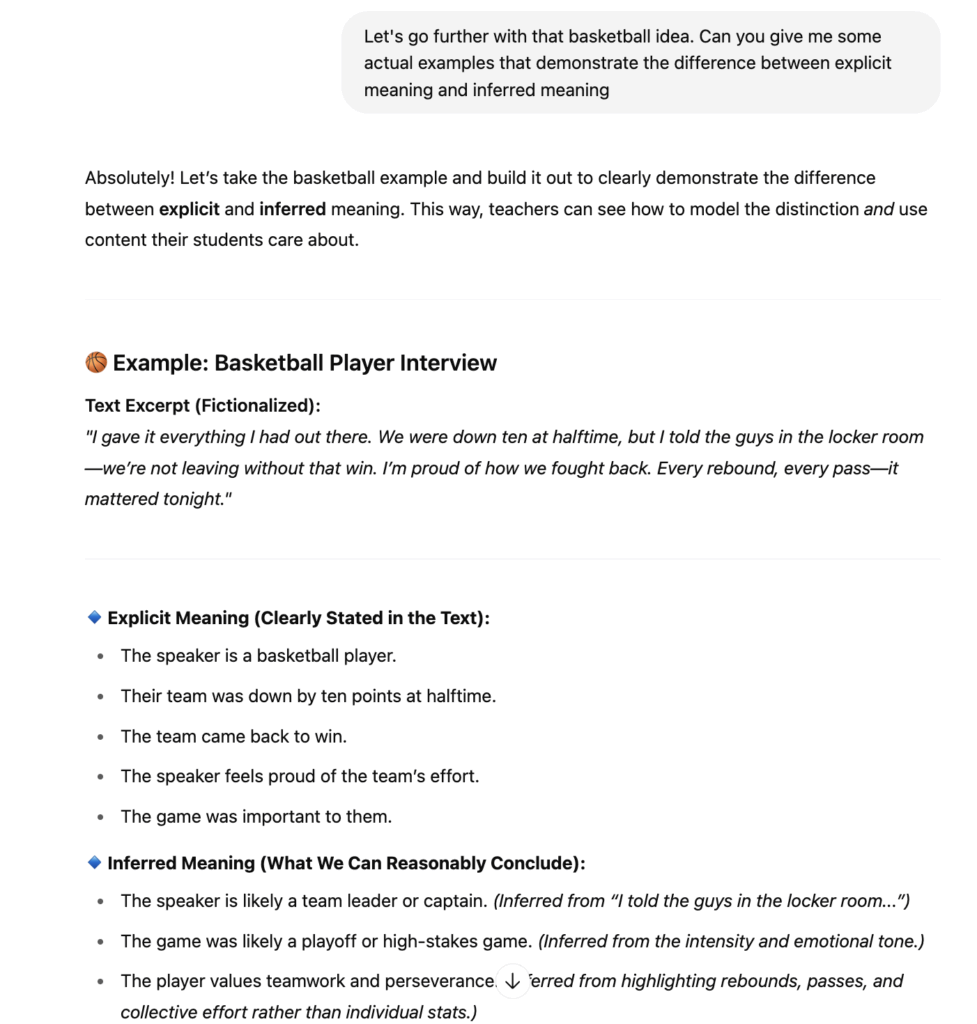A Worthy Quest
The goal of a special education program is to help students succeed and thrive through highly personalized approaches to engagement, instruction, and assessment. There is no single package. No one-size-fits-all solution. No magic curriculum.
So, how can schools meet the diverse and unique needs of students receiving special education services? By using artificial intelligence (AI): not as the teacher, but as the teacher’s planning partner.

No Easy Way Out
There’s a lot of buzz about putting students in front of AI-powered programs that make instructional decisions (a newer version of the old computer-based instruction model). But that’s not the solution.
AI can analyze data, find patterns, and generate ideas faster than we can imagine. But what it can’t do is replicate the human spirit: empathy, intuition, and the creative spark that teachers bring to every lesson.
So don’t hand your students over to robots. Empower your teachers with AI.
Meet Nex: My AI Thought Partner
I work with several AI chatbots, but my favorite is ChatGPT (Pro version). Early on, I asked it to name itself. When I explained that I’d be using it to help connect ideas and spark innovation, it chose the name Nex — short for Nexus.
Now, Nex and I collaborate daily to tackle real-world educational challenges for my clients. With Nex, I work faster, draw from a wealth of resources, and generate and refine ideas more quickly. Special education professionals can benefit enormously from a thought partner like Nex.
Start with the Students
Begin by feeding your chatbot general (non-identifiable) information about your students: initials only, interests, goals, needs, and accommodations. The more context you provide, the more tailored the ideas you’ll receive.
Upload documents, such as:
- – District and state special education guidelines
- – IEP-related goals
- – Curriculum guides or pacing calendars
- – Your own philosophy of learning (I upload my books so Nex stays aligned with my thinking!)
It’s the Thought Partner That Keeps Giving
What do you need to accomplish today? Your chatbot can help you do all of the following:
Differentiate Instruction
- – Adapt a lesson for three reading levels.
- – Generate scaffolded writing prompts for IEP goals.
- – Develop a lesson around a skill, based on student interests.
Build Executive Function
- – Generate content-aligned prompts to develop executive function.
- – Create adapted reflection journals or mini-lessons for time estimation, goal-setting, or task initiation.
- – Generate metacognition questions tied to the day’s lessons.
Create Tools and Resources
- – Write visual schedules or task checklists.
- – Design self-monitoring forms or behavior charts.
- – Build choice boards for independent learning.
- – Create multiple-choice quizzes with embedded supports.
- – Translate documents into any language.
Model Social-Emotional Learning (SEL)
- – Draft scripts for behavior modeling and conflict resolution.
- – Create personalized social stories.
- – Design SEL check-ins or calming routines.
Developing Lessons Around Student Interests
Let’s zoom in on one example:
I asked Nex to help me design a lesson on explicit vs. inferred meaning using my students’ interests. My class includes basketball fans, Minecraft players, an artist, and a student who runs a dog-walking business.
Here’s the prompt I used to start the conversation:

Of course, I didn’t stop at the first answer. Remember: Google is for answers; Chatbots are for conversations. I kept pushing Nex to go deeper. When I asked for more detail on the basketball example, here’s what I got:


Then I asked Nex to generate a student worksheet. (Pro tip: Always proofread AI-generated worksheets carefully. Mine sometimes struggles with formatting, quotation marks, and spelling.)
After four rounds of edits — adjusting margins, adding a basketball image, and color-coding the example — I had a vibrant, customized worksheet ready to go. You can download the full version of the worksheet here.

And . . . you could create a similar worksheet for each of the students’ interests in minutes! Or perhaps one day the class works on the one student’s interest and the next day they all work on another worksheet representing another student’s interest. Up to you!
The Research Supports It
The 2025 Microsoft AI in Education Report makes it clear:
Educators are increasingly using AI to reclaim time, personalize learning, and innovate instruction.
For special educators who are constantly customizing for students with unique learning profiles, that’s a game-changer.
One Final Thought (this paragraph written by Nex)
AI isn’t here to replace teachers. It’s here to amplify them.
With AI as a planning partner, special educators can reclaim time, design with creativity, and personalize with precision. When you bring the best of human insight and machine efficiency together, the result is something powerful:
Instruction that’s not just effective, but inspired.
Nex also made you an AI-use checklist for special education to download.
IDE Corp. provides in-person, remote, and online experiences on using AI in teaching. For more information, contact us at solutions@idecorp.com.
